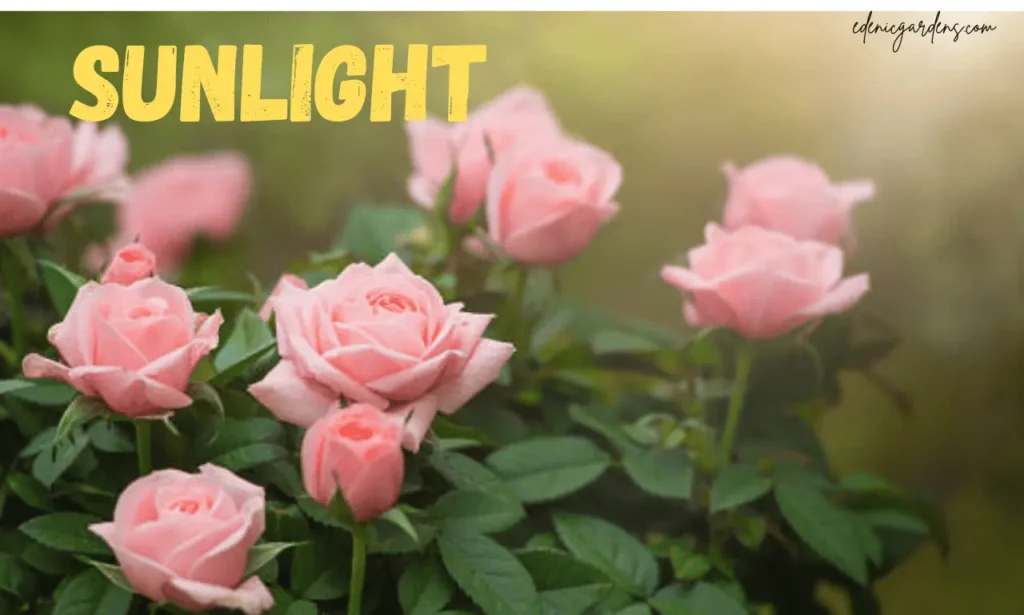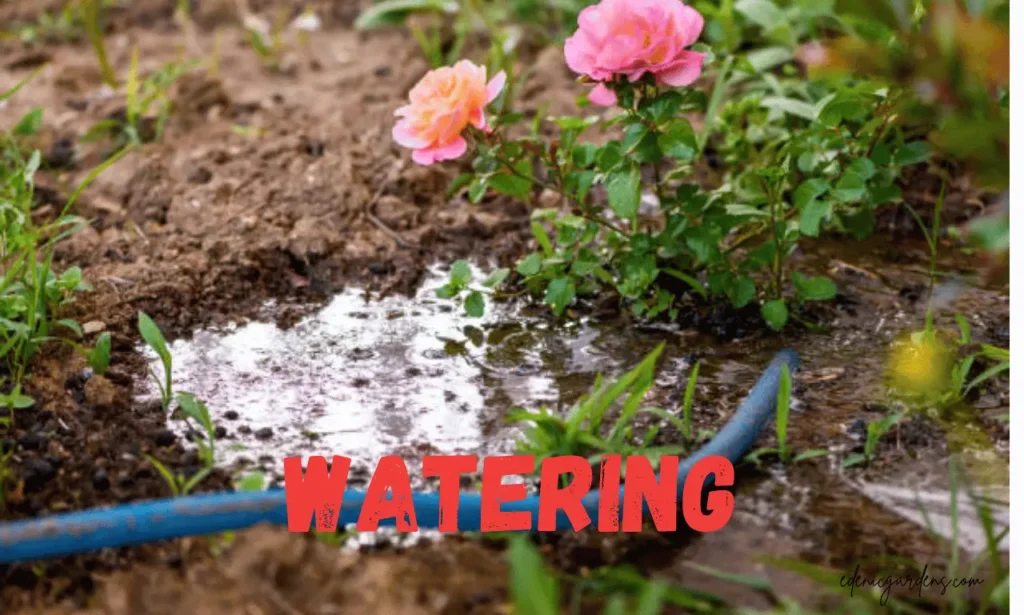Creating a rose garden at home is not just about planting flowers; it’s an invitation to immerse yourself in nature. I’ll share the journey that turned my humble patch of earth into a vibrant haven filled with roses. From selecting the right varieties to understanding their unique needs for sunlight, soil, and Water, I’ll walk you through essential tips and care routines that will empower you to cultivate your dream garden. . Join me on this fragrant adventure. Let’s Start The Journey!
Choosing the Right Variety of Roses

When I first started my journey into the world of roses, I was amazed at how many types there are. Each type has its own unique charm and personality.
- For instance, hybrid teas are perfect if you’re looking for stunning single blooms that stand tall and elegant in a vase.
- floribundas offer clusters of colorful flowers that create a beautiful, abundant display in your garden. It’s like choosing between a classic beauty and a joyful fiesta!
I realized that it’s essential to consider your climate and soil conditions when picking roses. Some varieties thrive in hotter temperatures while others prefer cooler regions. This discovery helped me select roses that not only survived but flourished in my garden! Additionally, don’t forget to think about maintenance; certain types require more pruning or care than others.
Planting
When planting a rose garden, spring is the perfect time to get started. The soil is warming up, and the flowers will thrive with the longer days of sunshine. If you’re new in gardening, Then using container-grown for roses. These are easy to manage and can be placed in various spots around your yard and giving you a flexibility in Garden design.
- choose a sunny spot where the roses will receive at least six hours of sunlight daily.
- Prepare your containers with well-draining soil; mixing potting soil with compost can provide essential nutrients for healthy growth.
- Water your roses regularly—but don’t soak them—as too much moisture can lead to root rot.
Soil Composition and pH
- Soil composition plays a vital role in the health of our gardens, and it can transform your growing experience. The balance of sand, silt, clay, and organic matter creates a nurturing environment for plants to thrive. Adding compost they not only boosting nutrients but also improving soil structure. It keeps moisture levels just right—too much or too little can hinder plant growth. Fertilizer Enhance the Soil composition and pH.
- pH is another critical factor that often gets overlooked. Most plants prefer a slightly acidic to neutral pH (around 6 to 7) for optimal nutrient uptake. If your soil leans too far towards acidity or alkalinity, you might notice yellowing leaves or stunted growth. Similarly, alfalfa meal and kelp meal not only enhance fertility but also contribute micro-nutrients that promote robust plant health—making your garden a thriving ecosystem!
Light Requirements

Roses thrive best in bright sunlight, ideally Roses are receiving around six to eight hours of direct sunlight each day. This exposure not only boosts their growth but also enhance the color and fragrance of the blooms. If you notice your roses becoming leggy or failing to bloom, it could be a sign they’re not getting enough light. Simply moving them to a sunnier spot can work more efficent!
Spacing
When planting roses, giving each bush enough space is vital for their health and beauty. You should allow at least 18 to 24 inches between each rose plant. This distance ensures that the flowers can breathe, receive a sunlight, and have the room they need to grow strong roots. Proper spacing also helps reduce the risk of diseases since air circulation minimizes humidity around the plants.
It’s essential to consider the type of roses you’re growing as well. Some varieties may require more space due to their larger size or nature. For instance, climbing roses may need a trellis and ample area to flourish upward rather than outward
Planting Guidelines
We’ll break down essential planting tips that are easy to follow and perfect for any aspiring gardener. From choosing the right plants for your climate to mastering the art of proper spacing, we’ll guide you through each step with straightforward advice that helps in gardening. With these practical guidelines, Let’s dig in!
Dry Root Roses
- When planting dry root roses, the first step is to soak the roots in a bucket of water for about 4 to 6 hours before planting. This helps revive the roots and ensures they are hydrated as they transition into their new environment.
- Choose a well-draining spot in your garden that receives at least six hours of sunlight daily, as roses thrive best in sunny conditions.
- Dig a hole that’s about twice the width of the root system and just deep enough to cover it without burying the graft union
- . Mix some compost into the soil you’ve dug out, this enhace it with nutrients and improves drainage..
- Give your newly planted rose a good watering and add mulch around its base to retain moisture while protecting against weeds.
Potted Roses
When planting potted roses, the right timing can make all the difference.Time is very important for the growth of plant.
- Spring is ideal as it gives your roses more time to establish roots before facing harsh weather.
- Choose a pot that’s at least 12 inches deep and wide to give these beauties room to grow.
- Ensure your pot has drainage holes; standing water can lead to root rot, which can danger your plant’s health.
- Soil quality plays a crucial role in thriving potted roses. A mix of good-quality potting soil with compost enriches nutrients, providing an excellent foundation for growth.
- Regular watering is key—keep the soil consistently moist but not soggy; this balance promotes strong roots while preventing overwatering.
Overall Care
Watering

Watering is more than just a routine task, it’s an art that grow your plants and helps them thrive. Each plant has its unique watering needs, so understanding these can be a game-changer for your garden.
Watering your roses is more than just soak the soil; it’s about nurturing a vibrant ecosystem for these beautiful blooms. Roses thrive when their roots have access to the right amount of water, enabling them to draw up nutrients effectively. Ample watering helps prevent diseases like root rot,
- One helpful tip is to water your roses deeply early in the morning or late in the evening when temperatures are cooler.
- Applying mulch around your roses can help retain soil moisture while reducing competition from weeds that may harbor diseases.
Conclusion
In conclusion, creating a beautiful rose garden at home is both a rewarding and enjoyable adventure that can enhance your outdoor space. By selecting the right varieties, preparing the soil properly, and maintaining consistent care through watering, you can cultivate a thriving display of roses. Remember to consider your local climate and seasonal changes to ensure optimal growth and blossoming. So gather your tools, pick your favorite rose varieties, and start planting today—your dream rose garden awaits.
FAQ’S
Q. When is the best time to plant roses?
The ideal time to plant roses is in early spring or fall when temperatures are mild and the ground is workable.
Q. How much sunlight do rose plants need?
Roses thrive with at least 6-8 hours of direct sunlight each day for optimal growth and blooming.
Q.What kind of soil is best for growing roses?
Well-drained, loamy soil enriched with organic matter works best for roses; consider testing pH levels (6.0-6.8 is ideal).
Q.What type of roses should I choose for my garden?
Choose varieties suited to your climate, such as hybrid teas, or climbing roses, based on your garden’s space and sunlight

